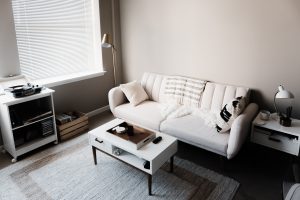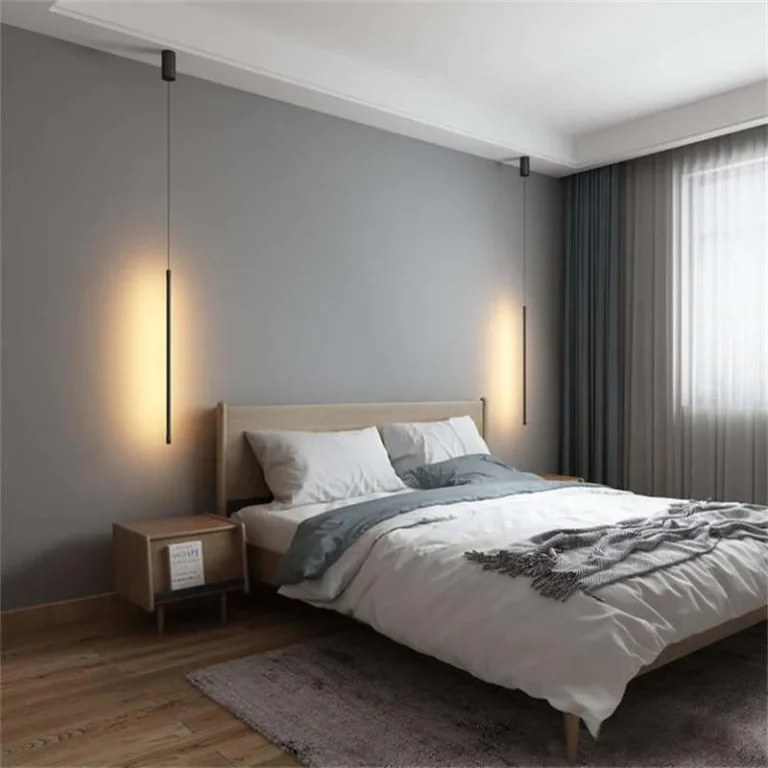Are you looking to bring in more natural light into your living room? If so, you’ve come to the right place! In this article, we will explore various practical tips and tricks to help you maximize the use of natural light in your living space. From strategic furniture placement to the use of mirrors and window treatments, you’ll discover simple yet effective ways to create a brighter and more inviting atmosphere in your home. So let’s get started and make the most of that beautiful natural light!
Table of Contents
ToggleChoosing the Right Window Treatments
Consider Sheer or Light-Colored Curtains
When it comes to choosing window treatments, opting for sheer or light-colored curtains can make a significant difference in maximizing natural light in your living room. Sheer curtains allow sunlight to filter through while still providing a level of privacy. Light-colored curtains, such as white or pastel shades, reflect light and make the room feel brighter and more spacious. These options are perfect for those who want to enjoy ample natural light without sacrificing privacy.
Use Blinds for Easy Light Control
Blinds are another excellent choice for controlling the amount of natural light in your living room. With adjustable slats, blinds allow you to easily regulate the level of light entering the space. You can tilt the slats to redirect the sunlight away from direct eye contact or fully open them to flood the room with radiant light. Blinds offer a versatile and practical solution to accommodate your lighting needs throughout the day while still adding a touch of style to your windows.
Opt for Roman Shades to Filter Light
If you desire a window treatment that strikes a balance between sheer curtains and blinds, Roman shades are a great option. These shades consist of fabric that can be raised or lowered, allowing you to completely control the amount of light entering your living room. When fully raised, Roman shades provide an unobstructed view and plenty of natural light. Lowering them partially or fully can help filter harsh sunlight, making the room more comfortable and preventing furniture and decor from fading due to prolonged exposure.
Install Frosted or Privacy Glass
For those seeking privacy without sacrificing natural light, frosted or privacy glass is the perfect solution. These options allow light to pass through while obscuring the view from the outside. Frosted or privacy glass also adds a touch of elegance and sophistication to your living room. By installing such glass on windows that face busy streets or neighboring buildings, you can create a well-lit and private space without the need for additional window treatments.
Arranging Furniture to Maximize Light
Position Furniture Away from Windows
To make the most of natural light in your living room, it’s essential to arrange your furniture in a way that allows the sunlight to flow freely into the space. Positioning furniture away from the windows ensures that nothing obstructs the light’s path, allowing it to reach every corner of the room. By creating an open and unobstructed pathway for light, you can create a brighter and more inviting ambiance in your living room.
Opt for Low-Profile Furniture
Choosing low-profile furniture can help maximize the amount of natural light in your living room. This type of furniture typically has lower backs and arms, allowing light to flow over and around it. Unlike bulkier pieces that cast shadows and hinder the light’s reach, low-profile furniture keeps the space open and filled with an abundance of light. Additionally, this furniture style can give your living room a more contemporary and streamlined look.
Choose Reflective Surfaces for Accent Pieces
Integrating reflective surfaces into your living room decor can significantly enhance the natural light in the space. Select accent pieces such as mirrors, metallic art, or glass sculptures that can reflect and bounce light around the room. Mirrors, in particular, are excellent at creating the illusion of a larger space while amplifying the brightness through their reflective surfaces. By strategically placing these reflective objects in your living room, you can make the most of the natural light and create a visually appealing environment.
Placing Mirrors Strategically
Position Mirrors Across from Windows
One of the most effective ways to maximize the natural light in your living room is by placing mirrors directly across from windows. This placement allows the mirrors to reflect the incoming light, bouncing it back into the room and creating a brighter and more illuminated space. The larger the mirrors, the more light they can reflect, so consider opting for oversized mirrors to maximize the impact. By strategically positioning mirrors across from windows, you can make small living rooms feel more spacious and ensure that every corner is filled with natural light.
Place Mirrors on Opposite Walls
Another strategy to make the most of natural light is by placing mirrors on opposite walls. This arrangement creates a continuous reflection of light, effectively doubling its presence in the room. By placing mirrors on walls perpendicular to the windows, you can create a harmonious balance of light and ensure that every part of your living room is bathed in warm sunshine. This technique is especially useful in rooms with limited natural light or those that are poorly oriented towards the sun.
Opt for Oversized Mirrors for Maximum Reflection
If you truly want to maximize the amount of natural light in your living room, consider opting for oversized mirrors. Large mirrors have the advantage of reflecting more light due to their increased surface area. By choosing a mirror that spans a significant portion of the wall, you can create a dramatic effect where natural light is amplified and evenly distributed throughout the space. Oversized mirrors can be a statement piece while also serving a practical purpose of enhancing the brightness and overall ambiance of your living room.
Keeping Windows Clean
Regularly Wipe Down Windows and Frames
Keeping your windows and frames clean is crucial for allowing maximum natural light to enter your living room. Dust, dirt, and grime can accumulate on the glass surfaces and frames, causing the light to be diffused and weakened. Regularly wipe down your windows using a glass cleaner and a microfiber cloth to remove any residue and ensure clarity. Don’t forget to clean the frames as well, as they can accumulate dust and affect the overall appearance of your windows.
Clean Window Glass Inside and Outside
To fully optimize the natural light in your living room, it’s important to clean both the inside and outside of your windows. Over time, outdoor pollutants, such as dirt, pollen, and debris, can build up on the exterior glass, impeding the amount of sunlight entering the room. By periodically cleaning the outside of your windows, you can remove these obstructions and allow light to shine through clearly. Additionally, regularly cleaning the inside of your windows prevents the accumulation of dust and smudges, ensuring a bright and unobstructed view.
Remove Window Screens When Possible
If your windows have screens, consider removing them when feasible to maximize natural light. Screens can act as a barrier, reducing the amount of light entering your living room. By removing them during daylight hours or when you want to maximize brightness, you can ensure that nothing hinders the sun’s rays from illuminating your space. However, keep in mind that screens are useful for keeping insects out, so it’s best to balance your desire for natural light with practical considerations.
Using Light-Colored Paint or Wallpaper
Choose Light Shades to Reflect Natural Light
Opting for light-colored paint or wallpaper on your living room walls is an effective way to maximize natural light. Light shades, such as whites, creams, or soft pastels, reflect sunlight and create an illusion of brightness and expansiveness. By selecting a color palette that is lighter in tone, you can amplify the effects of natural light and create a welcoming and airy atmosphere in your living room.
Consider Pale Pastels or Neutral Colors
In addition to light shades, consider incorporating pale pastels or neutral colors into your living room’s color scheme. These colors have a calming and soothing effect while providing a subtle backdrop that enhances the natural light. Soft blues, greens, or beiges can create a harmonious ambiance that complements the brightness of natural light. By choosing pale or neutral colors, you can create a versatile and timeless look that allows the natural light to take center stage.
Use Glossy or Satin Finishes for Added Reflectivity
When selecting paint or wallpaper finishes for your living room walls, consider opting for glossy or satin surfaces. These finishes have reflective properties that can further enhance the impact of natural light. Glossy surfaces, in particular, reflect light more directly, creating a vibrant and luminous appearance. Satin finishes strike a balance between reflection and diffusion, offering a subtle glow that enriches the overall atmosphere. By utilizing glossy or satin finishes, you can ensure that every ray of natural light is utilized to its fullest potential.
Strategic Use of Lighting Fixtures
Install Ambient Lighting for Even Illumination
While the focus is on maximizing natural light, incorporating ambient lighting into your living room design can be beneficial, especially during darker hours or when there is limited sunlight. Ambient lighting provides overall illumination, filling in the gaps where natural light may fall short. By strategically placing recessed lights or track lighting fixtures, you can create an even distribution of light that complements the daylight, enhancing the overall brightness and functionality of your living room.
Place Task Lighting in Dark Corners
In areas where natural light may not reach or during specific tasks, such as reading or working, task lighting plays a crucial role. Place floor lamps, table lamps, or wall-mounted sconces in darker corners or near seating areas to provide localized lighting. Not only do these fixtures serve a practical purpose, but they also add a warm and cozy ambiance to your living room. Task lighting ensures that every area of your living room is well-lit and functional, even when natural light alone may not suffice.
Add Accent Lighting to Highlight Features
To create a visually appealing and inviting living room, consider adding accent lighting to highlight architectural features or specific points of interest. Wall-mounted picture lights, track lighting, or LED strip lights can be used to draw attention to artwork, statement walls, or decorative elements. By strategically illuminating these features, you can create depth and dimension, enhancing the overall ambiance of your living room. Accent lighting also provides a layer of visual interest that complements the natural light and adds personality to the space.
Minimizing Obstructions to Light
Trim Overgrown Outdoor Foliage
If your living room windows are obstructed by overgrown foliage or trees, consider trimming them to allow more natural light into your space. Overhanging branches or dense shrubs can cast shadows and block sunlight, inhibiting its ability to illuminate your living room. By trimming these outdoor elements, you can remove obstacles that hinder the light’s path and improve the overall brightness and clarity of your living room.
Avoid Heavy or Dark Window Coverings
While window treatments can enhance the aesthetic appeal of your living room, it’s important to choose options that don’t obstruct the natural light. Heavy or dark window coverings, such as thick curtains or dark-colored blinds, can absorb and block sunlight, resulting in a darker and less vibrant living room. Opt for lighter fabrics or sheer curtains that allow light to filter through while still providing privacy. This way, you can enjoy the benefits of natural light while maintaining the desired level of comfort and privacy in your living space.
Rearrange Furniture to Avoid Blocking Light
To make the most of natural light in your living room, it’s essential to arrange your furniture in a way that avoids blocking the light’s path. Take note of the location of windows and ensure that larger furniture pieces, such as couches or bookcases, are positioned away from these areas. By allowing light to flow freely into the space, you can create a bright and inviting atmosphere. Consider the layout of your living room and experiment with different furniture arrangements until you find the optimal setup that maximizes the natural light.
Creating Indirect Light Sources
Position Lamps Near Walls or Ceilings
Creating indirect light sources is an effective way to maximize the natural light in your living room. Positioning lamps near walls or ceilings allows light to bounce off these surfaces and illuminate the room in a softer and more diffused manner. Wall sconces, floor lamps with upward-facing shades, or pendant lights with adjustable heights can all contribute to indirect lighting. By utilizing these fixtures, you can create a cozy and inviting ambiance that complements the brightness of natural light.
Use Translucent Lampshades
Opting for translucent lampshades can help diffuse the light from your lamps and create a soft and gentle glow in your living room. Instead of casting direct beams of light, translucent shades allow the light to permeate through the fabric, resulting in a more ambient and gentle illumination. This diffused lighting helps to create a warm and inviting atmosphere while still preserving the natural light as the primary source of brightness in your living space.
Place LED Lights Behind Furniture or Shelves
To indirectly enhance the natural light in your living room, consider placing LED lights behind furniture or shelves. These lights create a subtle glow that adds depth and dimension to the room. By strategically positioning LED lights behind bookcases or entertainment units, you can create an illusion of floating shelves while also amplifying the overall brightness. This indirect lighting technique can transform your living room into a captivating and well-lit space.
Utilizing Natural Light-Enhancing Décor
Hang Mirrored or Metallic Artwork
Incorporating mirrored or metallic artwork into your living room decor can effectively enhance the natural light in your space. Mirrors reflect light, instantly brightening the room and giving the illusion of more space. Hanging mirrors opposite windows or on walls adjacent to windows allows them to capture and bounce light, creating a sense of openness and airiness. Metallic artwork, such as brass or silver sculptures or wall hangings, can also reflect light and add touches of elegance and sophistication to your living room.
Display Light-Colored Curtains or Blinds
To further enhance the natural light in your living room, consider displaying light-colored curtains or blinds as part of your decor. Sheer curtains in soft hues or blinds in light tones not only provide privacy and light control but also contribute to the overall brightness of the room. By incorporating window treatments that mirror the color scheme or complement the walls and furniture, you can create a cohesive and visually appealing living room that maximizes the impact of natural light.
Choose Furniture with Light or Glass Elements
Another way to make the most of natural light is by selecting furniture with light or glass elements. Light-colored upholstery or furniture pieces made from materials such as light-colored wood or acrylic can reflect and amplify the natural light. Additionally, furniture with glass elements, such as coffee tables or display cabinets, can further enhance the brightness of your living room by allowing light to pass through. By integrating these elements into your decor, you can create a space that feels open, airy, and filled with natural light.
Monitoring Window Coverings at Different Times
Observe Changes in Natural Light Throughout the Day
To truly optimize the natural light in your living room, it’s important to observe and understand the changes in sunlight throughout the day. Sunlight angles and intensity vary as the day progresses, and different times may call for adjustments to your window coverings. Pay attention to how the light enters your living room at different hours and note any areas that may require additional shading or rearrangement of furniture. By actively monitoring the natural light, you can make informed decisions regarding your window treatments and ensure that your living room is always bathed in the perfect amount of light.
Adjust Window Treatments According to Sunlight Angle
As the angle of sunlight changes throughout the day, consider adjusting your window treatments to make the most of the available light. For example, if the sun is directly shining into your living room during peak daylight hours, you may want to lower blinds or close curtains partially to filter the intense brightness. On the other hand, during early morning or late afternoon when the sunlight is softer, you can open your window treatments fully to maximize the gentle rays. By being mindful of the sunlight angle and adapting your window coverings accordingly, you can create a balanced and comfortable living room environment.
Consider Motorized or Smart Window Coverings
For added convenience and flexibility in optimizing natural light, consider installing motorized or smart window coverings in your living room. Motorized blinds or curtains can be controlled remotely, allowing you to effortlessly adjust their position, angle, or openness throughout the day. Smart window coverings can even be programmed to automatically adjust based on the time of day, weather conditions, or your personal preferences. By harnessing technology in your window treatments, you can easily adapt to the changing levels of natural light and create a living room ambiance customized to your liking.
In conclusion, there are various strategies and techniques you can employ to make the most of natural light in your living room. By carefully selecting the right window treatments, arranging furniture strategically, utilizing mirrors, keeping windows clean, choosing light-colored paint or wallpaper, incorporating proper lighting fixtures, minimizing obstructions, creating indirect light sources, using natural light-enhancing decor, and monitoring your window coverings at different times, you can create a bright and inviting living room that maximizes the benefits of natural light. So go ahead, explore these ideas, and let the sunshine fill your living space with warmth and beauty.








